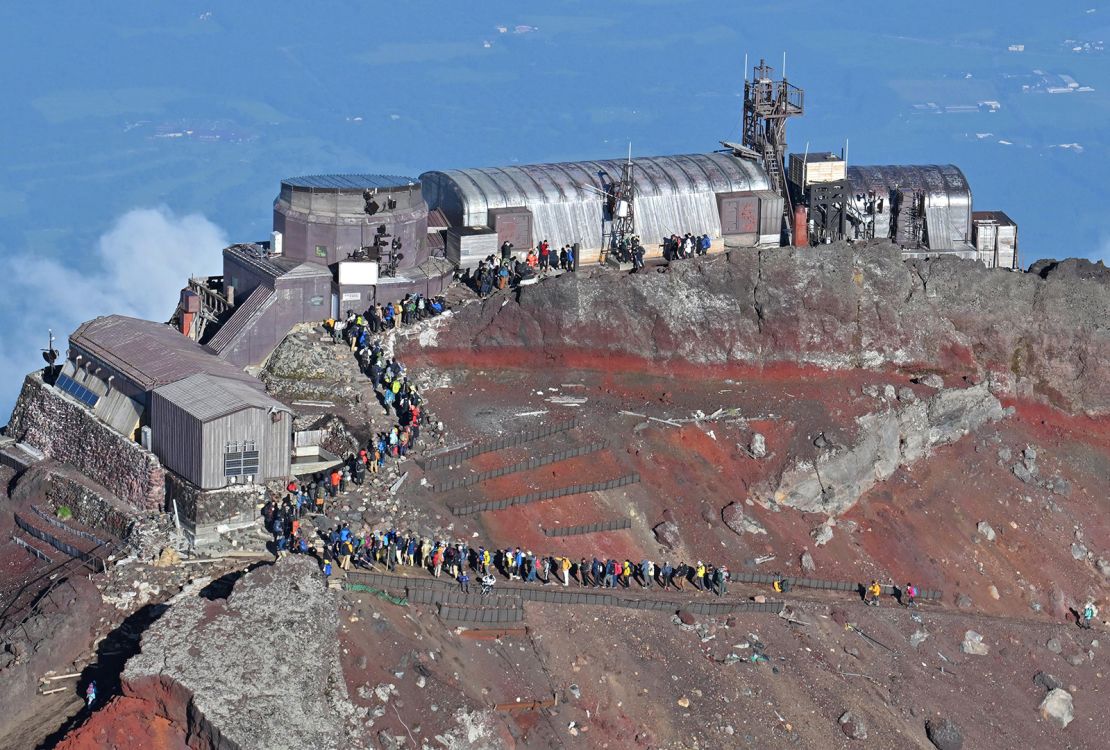CNN
—
November is just a few days away, but Japan’s iconic Mount Fuji remains snowless, marking the latest date without a snowcap since records began 130 years ago.
The peaks of Japan’s highest mountain are usually dusted in snow by early October, but as of Tuesday the summit has remained bare – raising the alarm of the impacts of the climate crisis on one of the country’s most beloved landmarks.
The first snowfall signals the arrival of winter. It follows the summer climbing season, which this year ended on September 10.
Snowcaps begin to form on average on Fuji on October 2, and last year, it was recorded on October 5, according to Japan’s weather agency – though public broadcaster NHK reported that most of it melted away in early November due to warm temperatures.
Japan’s Kofu Local Meteorological Office, which has announced the first snowfall on Fuji each year since it was established in 1894, has yet to do so this year, citing unseasonably warm weather.
“Because of the fact that high temperatures in Japan have been continuing since the summer and as it has been raining, there has been no snowfall,” Shinichi Yanagi, a meteorological officer at the Kofu office, told CNN Tuesday.
The lack of snow as of October 29, beats the previous record of October 26, set in 1955 and 2016, he said.
Japan recorded its hottest summer on record this year since statistics began in 1898, the Meteorological Agency said in September.

The average temperature from June to August was 1.76 degrees Celsius above the normal level, surpassing the previous record of 1.08 degrees set in 2010, the agency said.
Japan remained unusually warm into fall, with at least 74 cities recording temperatures of 30 degrees Celsius (86 degrees Fahrenheit) or higher in the first week of October, according to analysis from the non-profit research group Climate Central.
The unusual October heat Japan experienced was made three times more likely because of the climate crisis, Climate Central found.
Japan’s extreme summer heat was not a local event. This summer broke global heat records for a second straight year, with 2024 firmly on track to be the hottest year in recorded history.
The natural climate pattern El Niño helped drive the spike in temperatures, as well as human-caused factors such as burning fossil fuels — the main driver of the climate crisis.
Scientists have long-warned that the world needs to limit global warming to 1.5 degrees above pre-industrial levels to stave off the most catastrophic impacts of climate change.
A new study in January found that the climate crisis has reduced snowpack in most parts of the Northern Hemisphere in the last 40 years.
Later snowfall on Mount Fuji could be a worrying indication of where the world is headed, with warmer winters having an impact on snow, tourism, local economies, food and water supplies and even allergies.
Straddling Japan’s Yamanashi and Shizuoka prefectures, the 3,776-meter Mount Fuji is a UNESCO World Heritage site and an icon of Japan.
It’s usually coated in snow for most of the year until the annual climbing season opens in July, welcoming millions of visitors eager to hike to the summit or watch the sunrise from its famed slopes.
In recent years, the mountain has suffered from overtourism, and Japanese officials previously told CNN that visitors were littering, overtaxing toilet facilities and hiking in improper gear, which resulted in accidents or injuries.
In July, authorities implemented a tourist tax and put new regulations in place to manage the crowds. Now, climbers must pay 2,000 yen ($12.40) per person, with a daily maximum of 4,000 climbers per day.



